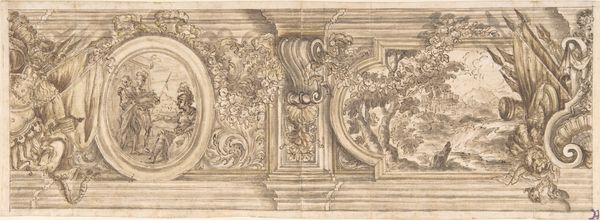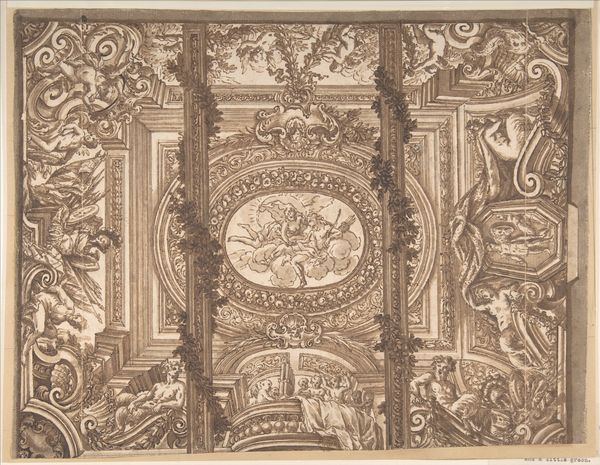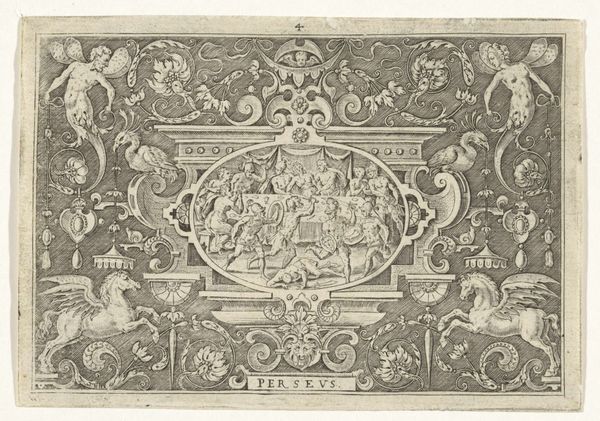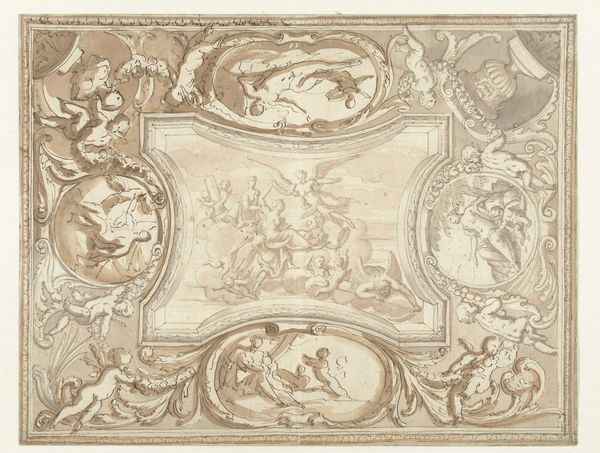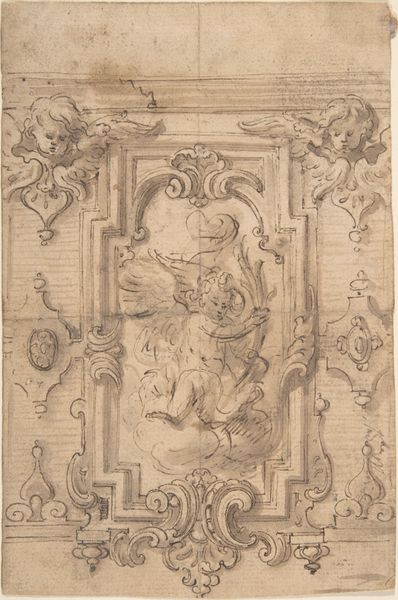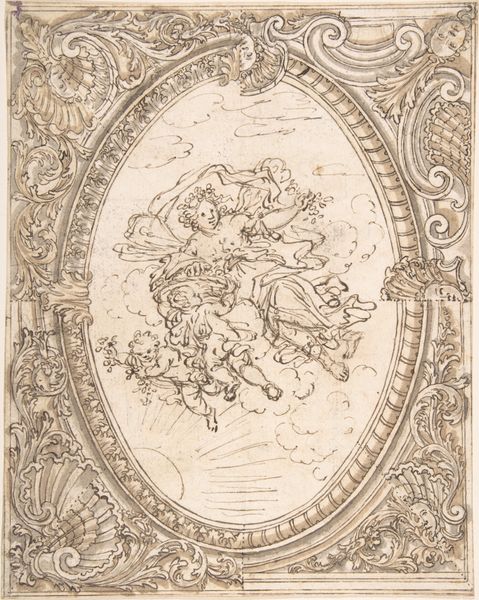
drawing, print, charcoal
#
drawing
#
toned paper
#
baroque
# print
#
charcoal drawing
#
figuration
#
form
#
geometric
#
charcoal
#
history-painting
#
decorative-art
Dimensions: 10-1/2 x 4-1/2 in. (26.6 x 11.4 cm)
Copyright: Public Domain
Editor: Here we have an anonymous "Design for a Ceiling," dating back to somewhere between 1600 and 1700. It seems to be a print or drawing, primarily using charcoal on toned paper. The amount of detail is quite astonishing! What do you see when you look at this work? Curator: What strikes me is the clear intention to display wealth and power through the immense labor required to produce such ornamentation. The toned paper, the charcoal—consider the social context. Who had access to these materials? For whom would this ceiling be constructed? Editor: So, you're thinking about who had the means to commission and create this? Curator: Precisely. Think of the craftsmanship, the process of transferring this design onto a physical ceiling, likely through a workshop system. Each volute, each figure meticulously rendered. It challenges the traditional hierarchy of "high art," such as painting, versus decorative arts. The very concept of design becomes less intellectual and more about physical making. Editor: I see. It's not just about the aesthetics, but the physical and economic process behind its creation. Do you think that changes how we should appreciate this design today? Curator: Absolutely. We move beyond simple appreciation of form to recognize the implications of its creation. The labor of anonymous hands that shaped Baroque aesthetics. What was their social standing? How did this commission affect their lives? We also consider its consumption. Who lived under this ceiling and experienced it daily? What were the power dynamics? Editor: That’s given me a lot to consider about this seemingly simple drawing! Curator: Indeed! Examining the materials and mode of production provides us with new insights into art. Editor: It’s a different approach from what I’m used to, but incredibly insightful!
Comments
No comments
Be the first to comment and join the conversation on the ultimate creative platform.

